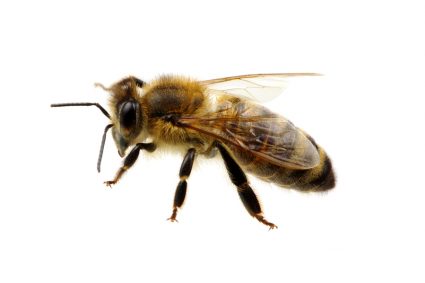
Rabbits may seem adorable and harmless, but they can wreak havoc on your garden, nibbling away at your prized plants and vegetables. The good news is that there are numerous rabbit repellents available in the market that can help protect your garden from these furry intruders. The question is, which one is the best?
The best rabbit repellent depends on your specific needs and preferences. Some top-rated options include Daliyrepal Deer and Rabbit Repellent, Liquid Fence Deer and Rabbit Repellent, Tsctba Extra-Long Lasting Rabbit Repellent, Nature’s MACE Rabbit Repellent, and I Must Garden Rabbit Repellent. Natural homemade solutions can also be effective, such as sprays made from citrus juice, garlic and red pepper, or cayenne pepper and Tabasco sauce. Always consider factors like effectiveness, ingredients, application method, longevity, price, and compatibility with other control methods when choosing a rabbit repellent.
Top-Rated Rabbit Repellents
Based on expert opinion and customer reviews, some of the best rabbit repellents include:
- Daliyrepal Deer and Rabbit Repellent: Considered the best overall option, this repellent is highly effective in deterring rabbits from your garden.
- Liquid Fence Deer and Rabbit Repellent: A budget-friendly choice that has received positive reviews from users.
- Tsctba Extra-Long Lasting Rabbit Repellent: Known for its long-lasting effects, this repellent is a great choice for those who prefer a low-maintenance solution.
- Nature’s MACE Rabbit Repellent: This granular repellent covers a large area and is highly rated by users.
- I Must Garden Rabbit Repellent: An environmentally safe and humane option designed to deter rabbits without causing them harm.
These repellents contain ingredients that are unpleasant for rabbits, such as dried blood, putrescent egg solids, garlic, and mint oil, but safe for plants, pets, and humans.
Natural and Homemade Solutions
For those who prefer a more natural approach, there are several homemade solutions that can act as effective rabbit repellents:
- Citrus spray: Mix equal parts water and citrus juice and apply it to your plants.
- Garlic and red pepper spray: Combine 5 crushed garlic cloves, 1 teaspoon of crushed red peppers, 1 gallon of water, and 1 tablespoon of dish soap. Let the mixture sit in the sun for a day or two before applying.
- Cayenne pepper and Tabasco sauce: Mix equal parts cayenne pepper and Tabasco sauce with a squirt of dishwashing soap and a gallon of water. Let the mixture sit in the sun for two days before applying.
Planting rabbit-repelling species such as holly, rosemary, lavender, and mint can also create a natural barrier against rabbits. Remember to reapply these repellents after rain or significant new plant growth.
Factors to Consider When Choosing a Rabbit Repellent
When choosing a rabbit repellent, consider the following factors:
- Effectiveness: Look for products with proven effectiveness and positive reviews.
- Ingredients: Choose a repellent with ingredients that are safe for your garden, pets, and children.
- Application Method: Rabbit repellents come in various forms, such as liquid sprays, granules, and powders. Choose a method that suits your needs and preferences.
- Longevity: Some repellents are rain-resistant and work for several months, while others may need to be reapplied more frequently.
- Price: Rabbit repellents come at different price points. Consider your budget and choose a product that offers the best value for money.
- Compatibility with other control methods: Consider whether the repellent you choose can be used in conjunction with other control methods, such as fencing.
Safety Measures and Precautions
When using rabbit repellents, remember to follow the manufacturer’s instructions for application and reapply as needed, especially after heavy rainfall. Store repellents in their original container, in a cool, dry area inaccessible to children and pets. Avoid contaminating water, food, or feed by storage or disposal of repellents. If you have pets, be cautious when using repellents that contain ingredients like dried blood meal, which may attract dogs.
In conclusion, the best rabbit repellent depends on your specific needs, preferences, and the size of the area you need to protect. Whether you choose a commercial product or a homemade solution, regular maintenance and monitoring of the repellent’s efficacy are crucial in protecting your garden from rabbits. Combining repellents with other control measures, such as fencing, habitat modification, or trapping, may provide better protection for your plants.
Frequently Asked Questions
What are some common signs of rabbit damage in the garden?
Common signs of rabbit damage include clean-cut damage to plants, small round droppings, and tracks with the shape of a peace sign. Rabbits prefer young, tender shoots and are particularly fond of peas, beets, beans, broccoli, lettuce, and carrots.
Can these repellents harm other wildlife?
Most commercially available rabbit repellents are not harmful to other wildlife. They are designed to deter rabbits through smell and taste, without causing harm. However, always check the label for any specific warnings or precautions.
How often should I reapply homemade repellents?
Homemade repellents, like the citrus spray or garlic and red pepper spray, should be reapplied every few days, or after rainfall. They are not as long-lasting as commercial products, so regular application is necessary for the best results.
Will these repellents deter all types of rabbits?
These repellents should work on most common types of rabbits found in North America, including cottontails and jackrabbits. However, their effectiveness may vary depending on the specific habits and tastes of the local rabbit population.
Can I use these repellents on all types of plants?
Yes, these repellents can be used on virtually all types of plants without causing harm. Nonetheless, it’s always a good idea to test a small amount on a particular plant and wait a few days to ensure there are no adverse effects.










